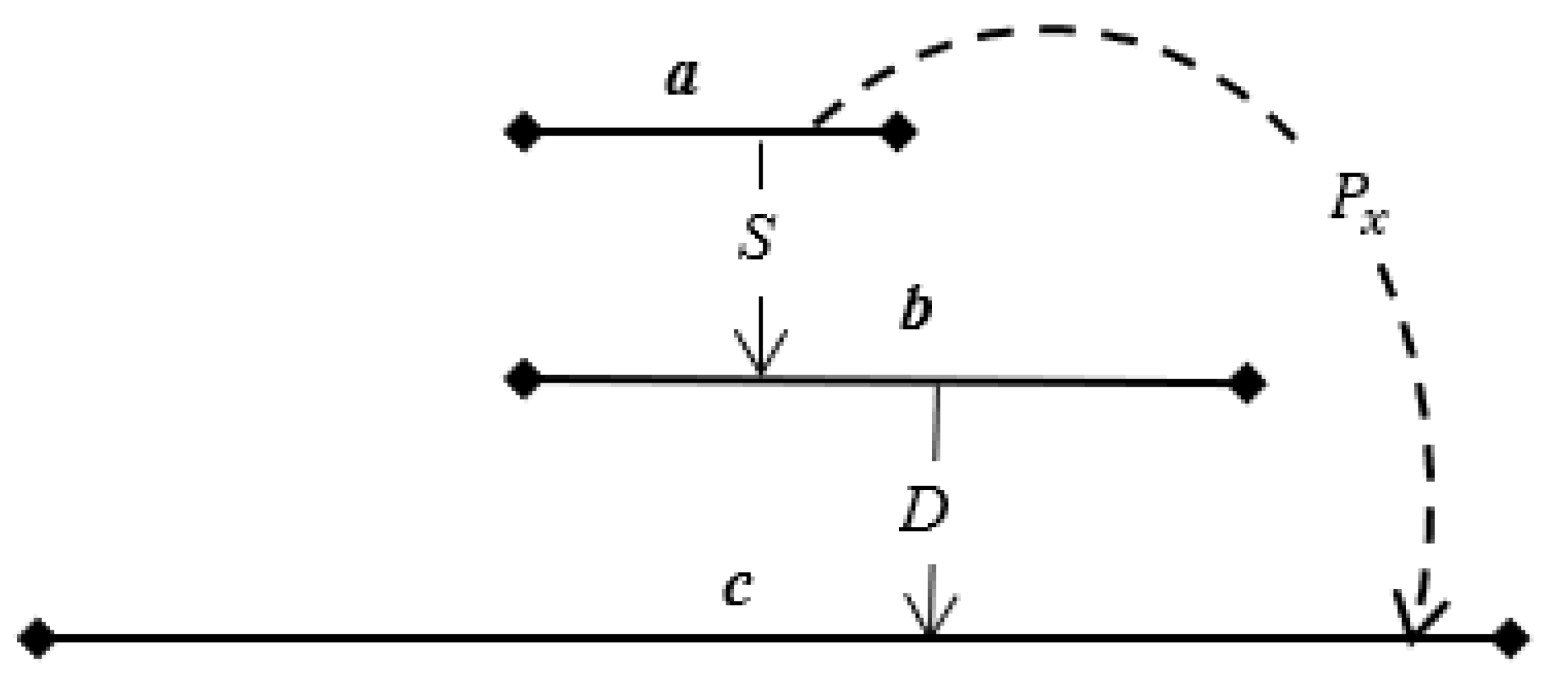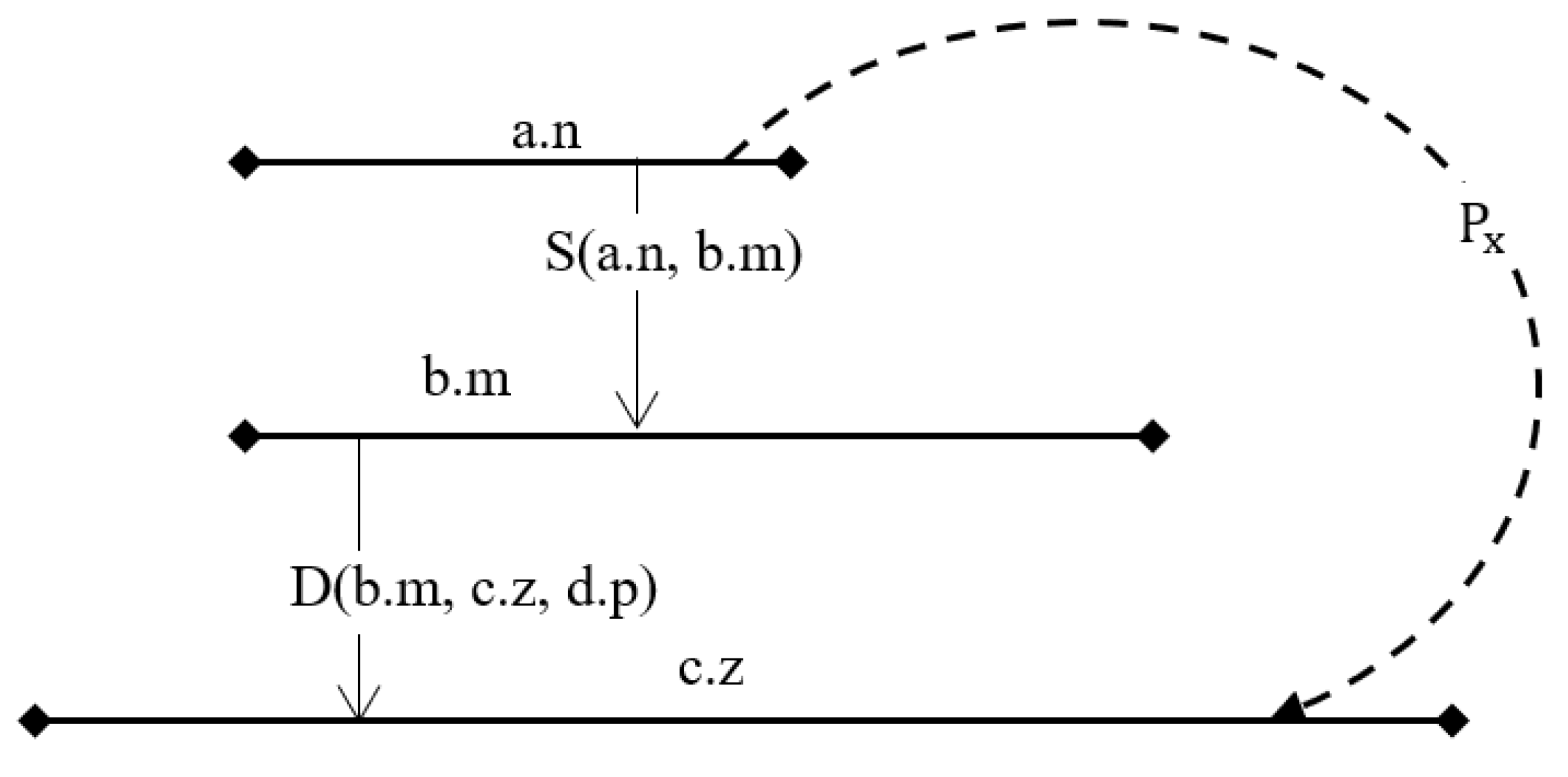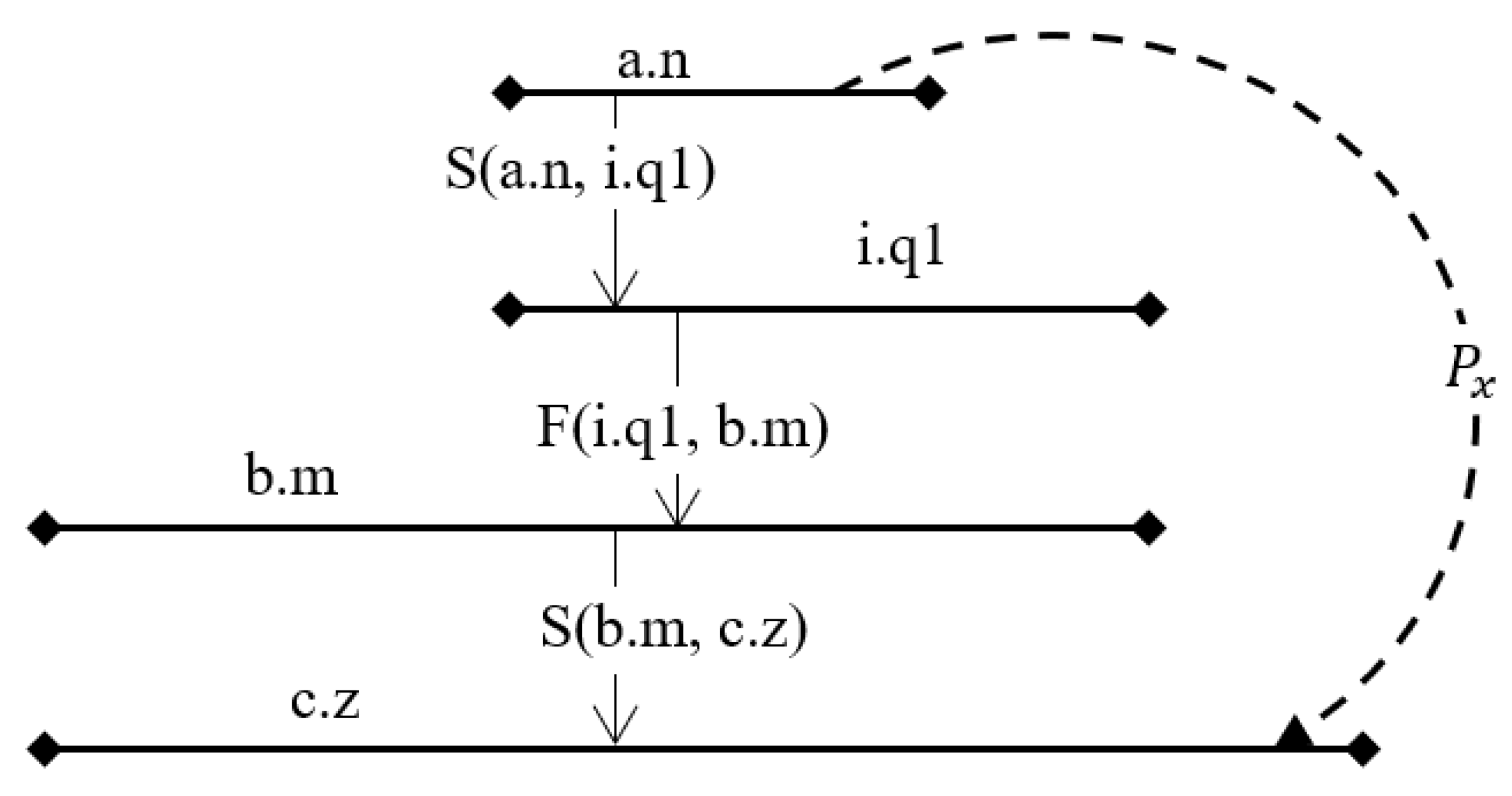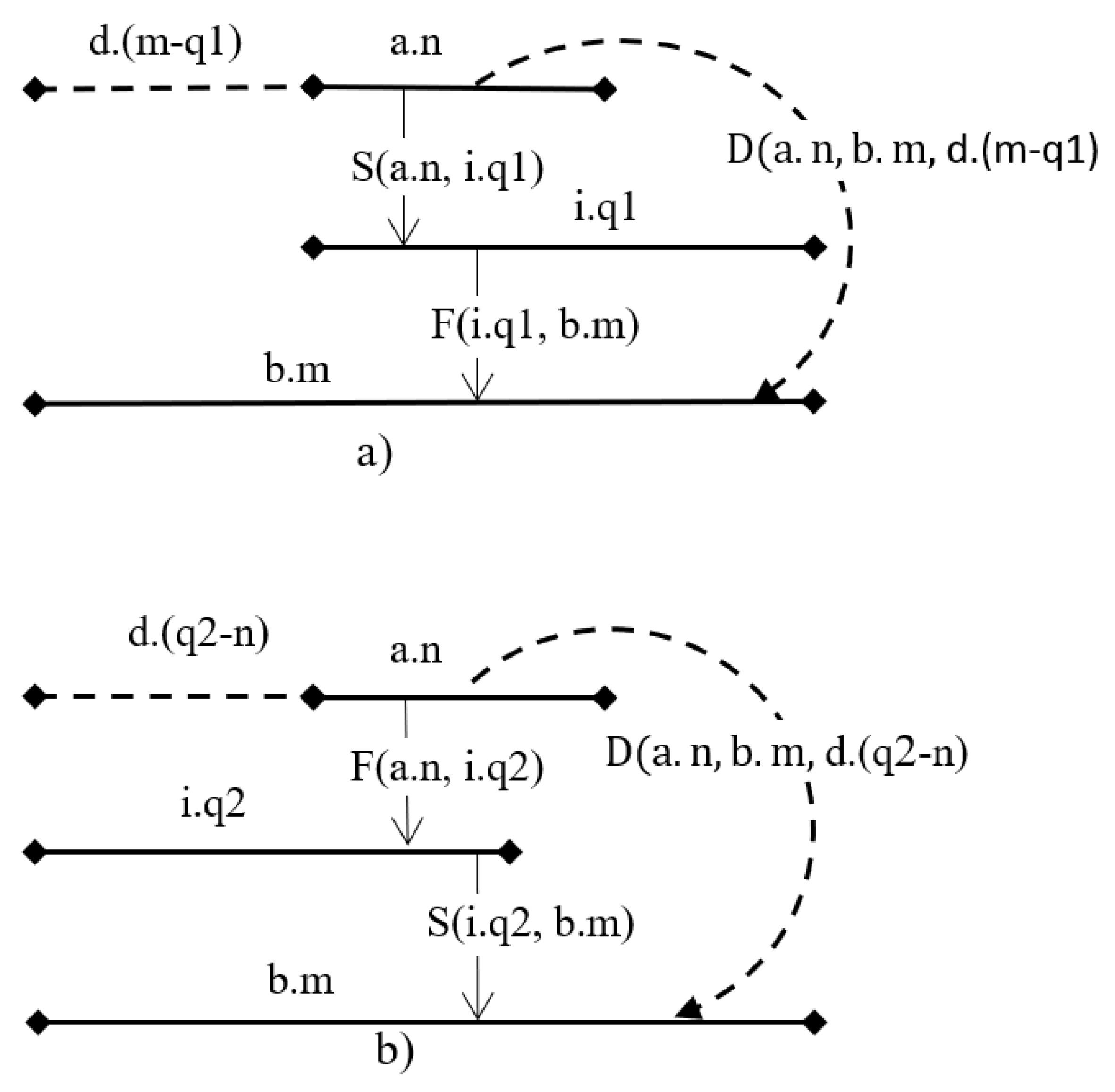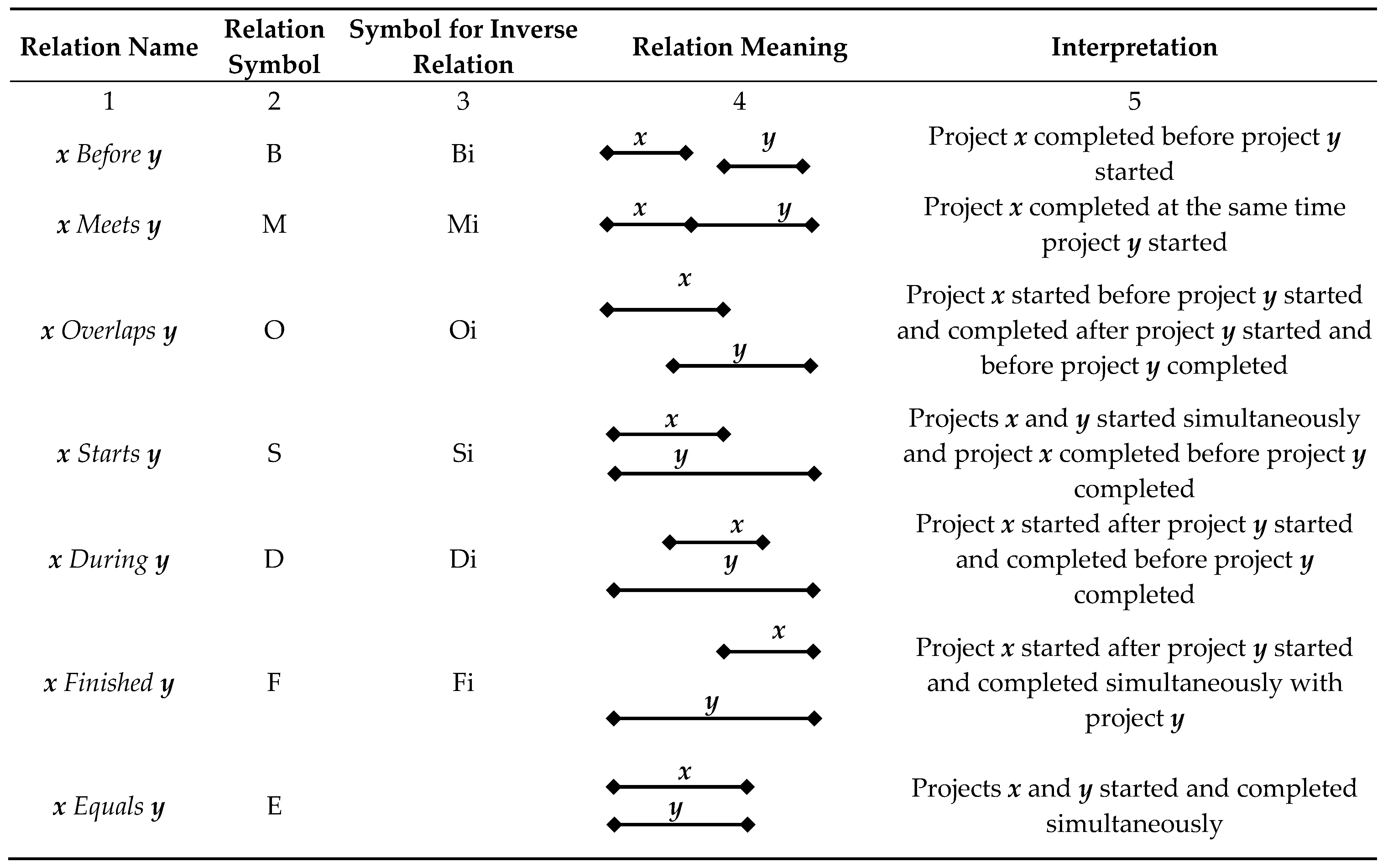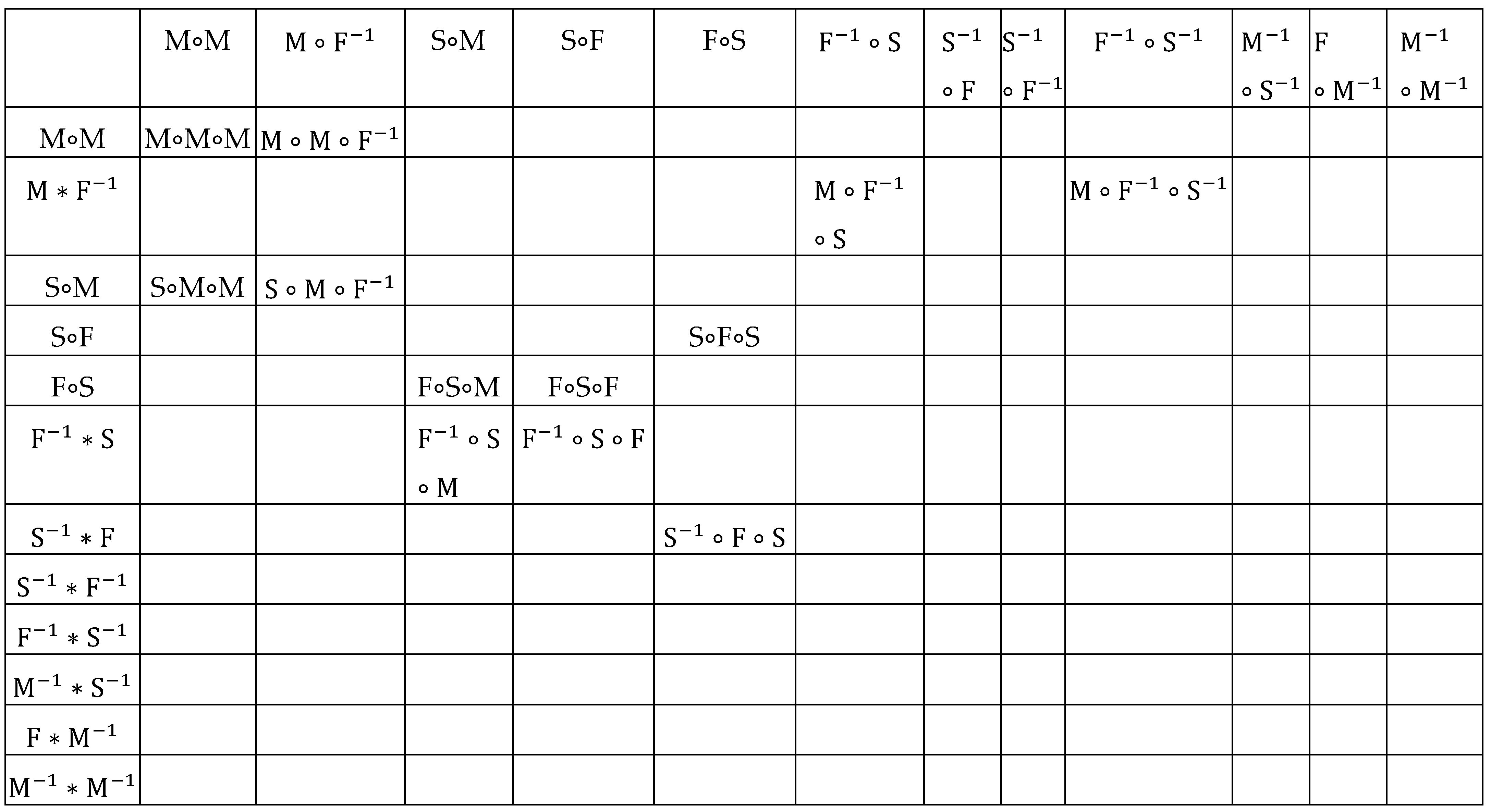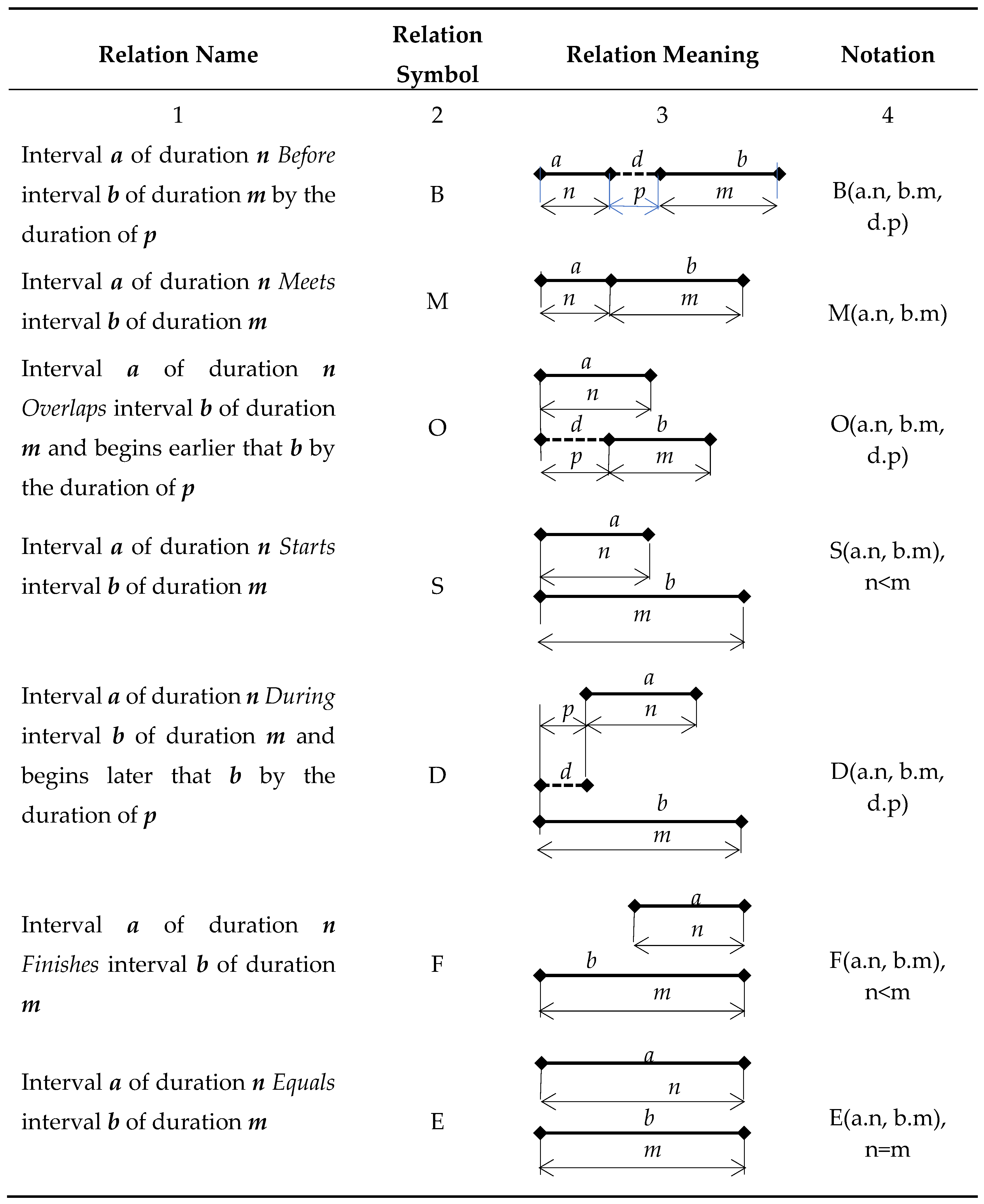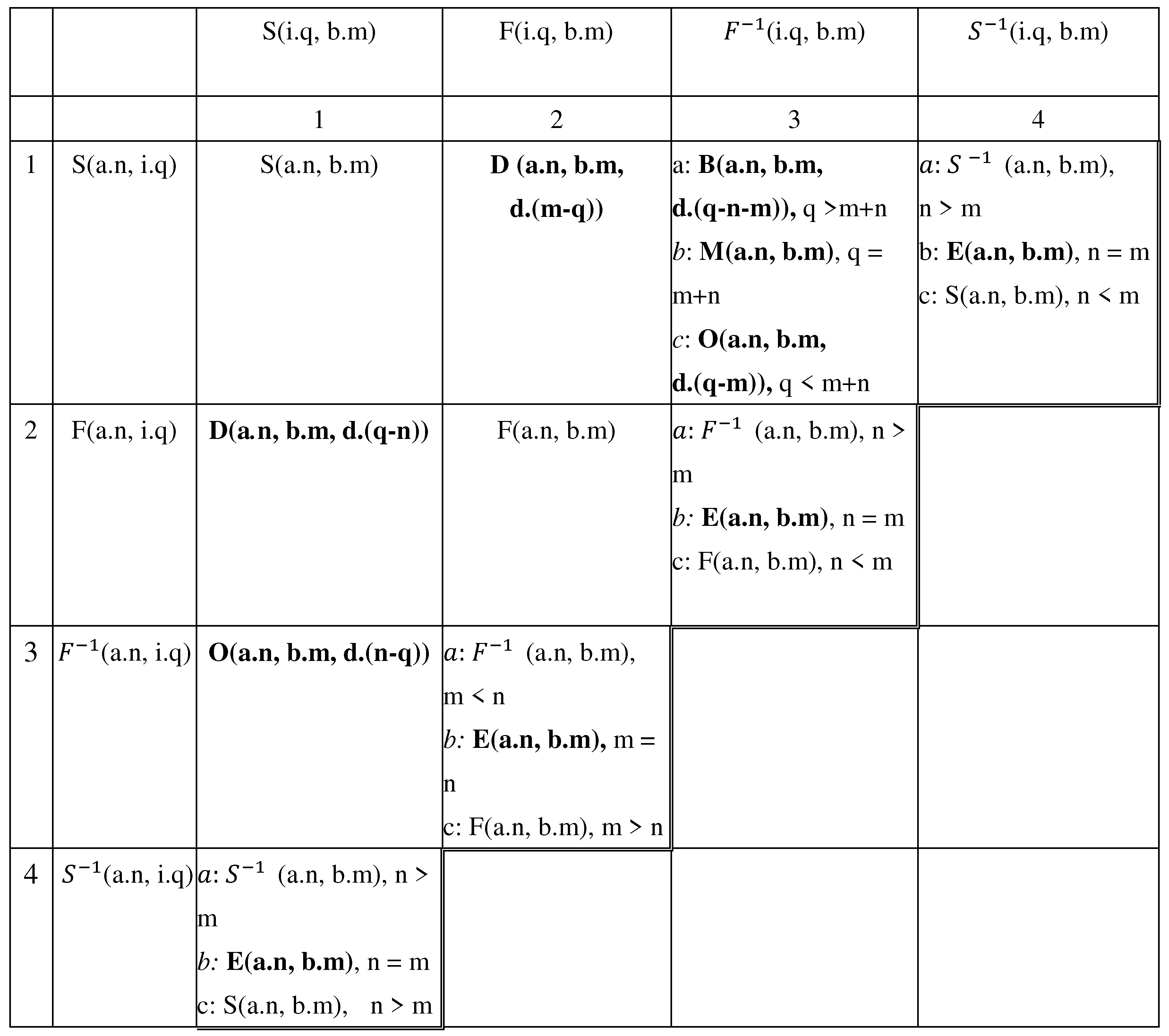1. Introduction
What is the future of symbolic AI? Is rule-based AI
all it can provide? To answer these questions it is vital to have a clear
definition of intelligence. General Motors' Head of Research, Charles
Kettering, is widely credited with saying "A problem well-stated is a
problem half-solved". So, what is the definition of intelligence? The
Oxford Dictionary answers this question as follows: intelligence is the ability
to acquire and apply knowledge and skills [1].
From such a definition, it may be concluded that knowledge plays a pivotal role
in AI, while computational knowledge science holds the key to further AI
advancement.
In this regard, the question arises: what kind of mathematical
apparatus is suitable for knowledge research? The first objective of this paper
is to answer this question. We have shown that knowledge is relational in
nature and can be expressed through implicit and semantic relations. The paper
introduced an algebraical apparatus for implicit relations.
The essence of knowledge in AI can be defined by
two concepts. They are the meaning and its computation. The paper's second aim
is to use the algebraical apparatus of implicit relations which reflect meaning
to explore these two concepts. Critical role in this process is played by a
knowledge structure we call the semantic triple chain.
2. Relational Foundations of Knowledge
2.1. Knowledge, Relations, and Meaning
The closest mathematical notion associated with
knowledge is relation. Indeed, when we talk about time, words like earlier, later,
during, and simultaneously are usually involved. These words represent
relations. Or, if we consider knowledge about objects in space, words like under,
over, and inside are involved. These words represent relations too.
Relations appear to be fundamentally positioned at the core of knowledge.
Therefore, the mathematical apparatus of relations is appropriate for knowledge
research.
Two mathematics departments study relations: set
theory and predicate logic. Let’s consider the following statements: “Brenda is
grandmother of Thomas and Kate”, “Mary is grandmother of Peter”. These
statements represent the grandmother relation. From set theory, this relation
can be defined as follows:
However, from a predicate logic point of view the
grandmother relation may be defined as:
Relations defined by set theory will be called
explicit relations while relations defined by predicate logic will be called
implicit relations.
How can we formalize the meaning of the
grandmother's statements above? Can we do it based on explicit relations?
Hardly, indeed, let’s consider, for example, the
OlderThan relation
between the same people. It can be defined as follows:
As can be seen from (1) and (3), the same formula
defines explicit relations representing different meanings.
Due to its uniqueness, expression (2) better
represents the meaning of the grandmother's relation from the perspective of
implicit relations. In fact, the predicate formula (2) can only express one
meaning. Nonetheless, this definition says nothing about Brenda, Thomas, Kate,
Mary, or Peter
To resolve this situation, a new category of
relations is needed. Let's look at how to form it. If we link an implicit
relation to an explicit relation, provided that the predicate defining the
implicit relation is true for each pair of objects in the explicit relation, we
will get an entity called a semantic relation [2, 3]. Denoting a semantic
relation as
, we can define it as
where
are, respectively, implicit and related explicit
relations. In our example above, expressions (1) and (2) define two sides of
the grandmother semantic relation
, namely, expression (2) defines its meaning, while
expression (1) defines its content.
The formal apparatus of implicit relations can be
applied to modeling intelligence, such as reasoning in semantic triple chains.
The formal apparatus of semantic relations, on the other hand, can be applied
to modeling knowledge graphs, including their intelligence. The purpose of
this paper is to further research implicit relations, their formal apparatus,
and application to modeling reasoning in semantic triple chains.
2.2. Algebra of Implicit Relations
There are four algebraic operations on implicit
relations: composition, conversion, disjunction, and conjunction, as well as
the property of inclusion. Let’s consider them. The composition of the implicit
relations
by
is called the implicit relation denoted as
if and only if the formula
is identically true. E.g., if
is the implicit relation “
x is the daughter
of
y” and
- “
x is the sibling of
y”, then the
implicit relation
“
x is the niece of
” is the composition of
by
since it is obvious that the expression (6) in
this case is identically true.
The conversion of the implicit relation
is called the implicit relation
denoted as
if and only if the formula
is identically true. For instance, if
is the implicit relation “
x is before
the implicit relation
“
x is after
is the conversion of the implicit relation
If the implicit relation
on the left side of equation (8) is substituted by
the definition of the same given in (7), the following property is obtained:
This property signifies that the formula describing
the conversion of implicit relation between objects x and y is
valid if the same implicit relation is valid between objects y and x.
The implicit relation
is called disjunction of implicit relations
and
and is denoted as
, if and only if the formula
is identically true. E.g., if
is the implicit relation “x is the mother of
y”
and
- “
x is the father of
y”, then the
implicit relation
“
x is the parent of
” is the disjunction of
and
.
The implicit relation
is called the conjunction of implicit relations
and
and is denoted as
, if and only if the formula
is identically true. E.g., if
is the implicit relation “
x is the sister of
y” and
- “
x is older than
y”, then the
implicit relation
“
x is the older sister” is the conjunction
of
and
.
Let’s now introduce the inclusion property. We
shall define this property as follows: the implicit relation
is included in the implicit relation
and this property is defined as
if and only if the formula
is identically true. E.g., if
is the relation “
x is mother of
y”
then it is included in the relation
“
x is parent of
y”.
The algebraic properties of the operations
composition and conversion, as well as their interdependence on disjunction and
conjunction operations, are characterized through the following correlations,
whose validity can be proven:
3. Model of Semantic Reasoning using Implicit Relations Algebra
3.1. Algebraic Model of Semantic Reasoning
Above we introduced the operation of composition
which is vital to modeling semantic reasoning. Indeed, in the 19th century,
British mathematician and logician Augustus de Morgan, for the first time,
introduced the interpretation of syllogistic reasoning as a composition of
relations [4]. In modern times this approach
is applied to non-syllogistic reasoning as well. For example, in the early
1980s James F. Allen applied the composition of relations operation to modeling
reasoning in the domain of non-metric temporal interval relations [5].
Allen proposed thirteen basic binary relations
covering all possible relations between two time intervals.
Table 1 below illustrates these relations. For
each relation the name, symbol, and symbol for the inverse relation are
provided. The meaning of each is portrayed by a diagram relating to the
intervals
x and
y. As an example, the first relation “
x Before
y” means that
x ends before
y begins, while the second
relation "
x Meets y" means that
y begins when
x ends.
Column 5 in the table illustrates the meaning of these relations in terms of
project management.
Each inverse relation in column three can be
interpreted as the result of the algebraic conversion of the relation in column
one. However, based on expression (9) above, we may conclude that the original
and inverse implicit relations represent the same meaning. Indeed, saying that
interval a is before interval b is the same as saying that
interval b is after interval a. Therefore, we may exclude inverse
relations from consideration without losing the completeness of the interval
relations representation.
Let's introduce the concept of a semantic triple
chain knowledge structure.
Figure 1 below
shows an example. This knowledge structure tells us that interval
a is
associated with interval
b via relation S and interval b is associated
with interval c via relation D. In other words this semantic triple chain can
be described as
aSb,
bDc.
Figure 1
also shows the unknown implicit relation
between intervals
a and
c. We call
semantic reasoning the process of finding out the unknown implicit relation
between entities in the semantic triple chain.
In terms of algebra of implicit relations semantic
reasoning task of finding the value of
can be defined as the process of resolving the
relational compositional expression as shown below:
Generalizing (21), we arrive at the following
algebraic model of semantic reasoning:
where
represents the implicit relations belonging to
the given semantic triple chain
, … ,
,
(n
, and
is the unknown relation between the first and the
last objects in this chain. We will refer to (22) as the algebraic relational
model of the semantic reasoning.
We can see that to obtain the value of the unknown
relation in (22), it is necessary to solve the algebraic
relational expression on the right side of this formula. In order to tackle
this issue, we need to answer two questions: how to represent implicit
relations and how to solve compositional relational expressions in different
domains?
3.2. Axiomatic Model of Relational Domain Ontology
Initially introduced by Aristotle, ontologies are
formal models of how we perceive a domain of interest. They provide a precise,
logical account of the intended meaning of terms, data structures, and other
elements modeling the real world [6]. The term
ontology refers to a wide range of formal representations, including
taxonomies, hierarchical terminology vocabularies, or detailed logical theories
describing a domain [7]. The term ontology was
adopted by early AI researchers, who recognized the applicability of the work
from mathematical logic and argued that AI researchers could create new
ontologies as computational models that enable certain kinds of automated
reasoning [8]. In [9],
attention was brought to a formal, algebraic approach which identifies an
ontology as a pair (S, A). S is the vocabulary (or signature) of
the ontology and A is the set of ontological axioms, which specify the
intended interpretation of the vocabulary in a given domain of discourse.
In this paper, we will introduce a similar
algebraic approach to axiomatic domain ontology. The peculiarity of the
ontology we are considering is that it is a relational ontology since it should
represent knowledge about implicit relations. To create an axiomatic ontology,
we divide all relations within a domain into two categories: base and derived
relations. Base relations are relations without definitions. They are
characterized only by their names and properties. Derived relations are
relations defined through base relations using implicit relations algebra.
We define the relational domain ontology as an
axiomatic model [10], which can be denoted as
and defined as
where
is the signature of the axiomatic system. It is
denoted as
where
is the base relations signature component defining
the set of base relations names, while
is the derived relations signature component
defining the set of derived relations names.
represents the totality of all derived relations
definitions.
is the base relations axioms component denoted as
where
defines the set of simplification axioms, while
defines axioms of indeterminacy.
The notion of relational expression in ontology we define inductively as follows:
If , then P is a relational expression;
If and
are
relational expressions, then
and
only they are relational expressions
The relational expression which is a base relation
or conversion of a base relation we call an elementary relational expression.
We say an expression has been loaded into the signature whenever it has been
computed into a base relation, derived relation, or their converts. Otherwise,
it is not loaded into the signature. The process of algebraic transformation of
an arbitrary relational expression to find out whether it is loaded into the
signature or not, we call resolution of this expression. This is, otherwise,
the computation of its value.
4. Semantic Reasoning in the Domain of Non-Metric Interval Relations
4.1. Axiomatic Model of the Non-Metric Interval Relations Ontology
We shall denote the axiomatic model of the
non-metric interval relations ontology as
and define it as
The signature’s base relations component we will
define as
while the signature’s derived relations component
will be defined as
We will also define the derived relations
definitions component
by the introduction of the following formulas:
Below the simplification axioms belonging to
component
of axioms
are shown:
Every simplification axiom represents some property
of the base relation and is expressed in the form of the transformation of an
expression on the left, composed of elementary expressions, into a base
relation.
The indeterminacy axioms belonging to component
are defined as follows:
Our ontology has been largely defined by
compositions of elementary expressions. Due to this fact, it is possible to
represent this ontology using a composition table shown below in
Table 2. In this table, rows and columns are
denoted by elementary expressions. The composition operation is performed as
follows: an elementary expression that represents the table's row is composed
by an elementary expression that denotes the column, and the result is given at
the intersection of row and column.
One can see that the composition table is filled
partially, namely its part divided by its diagonal. The reason is that all
other results in the table can be obtained by computation. For example, let’s
find out an unknown value at the intersection of row
and column
. We will get:
Here we have applied the property (16) of
conversion of relations composition and relation D definition (30).
4.2. Ontology-Based Algebraical Model of Semantic Reasoning
As the issue of the non-metric interval relations
ontology has been addressed, we are ready to turn our attention to the semantic
reasoning process. In (22) we define this process as the resolution or
computation of a compositional expression based on implicit relations which in
turn represent the meaning of relations. Therefore semantic reasoning is a
process of meaning computation.
Let's now move to development of semantic reasoning
model. At the heart of this model are two procedures. The first one is the
normalization procedure. It transforms a relational expression into a
base-normal form by replacing each derived relation contained within the
expression with its definition. Consequently, we will obtain an expression
consisting only of elementary expressions. E.g., the base-normal form of the
expression M ∘ O is the expression M ∘ F−1 ∘ S based on (32). The second procedure aims to simplify the base-normal expression. This is done using ontology simplification axioms and definitions of derived relations. These two steps - normalization and simplification -
comprise the essence of the semantic reasoning model.
Now let's return to
Figure 1 and consider equation (21) that represents the semantic reasoning task
of finding the value of unknown relation
. At the normalization stage, using the definition
of relation
D (31) we get:
At the simplification stage, we can see that in
accordance with (30) and (31) respectively, the compositions of the first
relation by the second as well as that of the second by the third define
derived relation
D. Here is how this can be resolved:
AAt the beginning of the resolution, we use the grouping rule (14). We shall call it G-rule. After that, we swap the relation D definition (30) with its definition (31). Such an operation we shall call Swap-rule. After that, G-rule is used again. Next, we apply the simplification axiom (39). We shall call such operation A-rule. Then we apply the definition (31) of relation D. We shall name such operation D-rule. Finally, we conclude that D is an unknown relation.
4.3. Checking the Completeness of Non-Metric Relational Domain Ontology
We shall consider that the axiomatic model of
relational domain ontology is complete [11] if
its axioms and definitions provide resolution of any relational expression.
Within the scope of this paper, we are interested only in compositional
relational expressions. Therefore, we shall examine the completeness problem
regarding this category of expressions. It is evident that any relational
expression can be transformed into the base-normal form. Therefore, we should
re-define the notion of completeness as follows: the domain ontology is
complete if its axioms and definitions provide resolution of any compositional
relational expression in the base-normal form.
Now, let’s ask ourselves the following question:
what are the scenarios where a relational expression in base-normal form cannot
be simplified? It may occur when this expression contains the composition of
three elementary relational expressions containing the composition of the first
expression by the second, as well as that of the second by the third, which
define derived relations or their conversions. In order to detect such
“difficult” compositions, one may proceed as follows. A table is drawn, whose rows
and columns are denoted by definitions of derived relations or their
conversions. At row-column intersections, one looks for ternary compositions
meeting the above-stated condition and investigates the possibility of
simplifying these expressions. If an expression cannot be simplified, its value
must be defined axiomatically.
Table 3
below represents such an analysis. This table shows that 12 expressions require
investigation. However, it may be proved that all of them can be simplified.
Therefore, we may conclude that the axiomatic model of non-metric interval
relations ontology is complete.
5. Semantic Reasoning in the Domain of Metric Interval Relations
5.1. Introduction to Metric Interval Relations
Below in
Table 4 the list of metric interval relations is shown. Each interval is denoted by two attributes separated by a dot. The first attribute is the interval name; the second attribute is the interval duration. Solid lines represent real intervals while dotted lines are invisible intervals.
5.2. Axiomatic Model of the Metric Interval Relations Ontology
We shall denote the axiomatic model of the metric interval relations ontology as
and define it as
The model’s signature will be denoted
and defined as
The composition table for the metric interval relations ontology is shown in
Table 5. In this table, the derived relations are shown in bold. There are some differences in the definition of non-metric vs metric interval relation ontologies. As opposed to the former case, in the latter case
M and
E relations fall into the category of derived relations, not base relations.
Table 5 also shows that the metric interval relations ontology does not include indeterminacy axioms.
We will reference relation definitions and properties in the composition table shown in
Table 5 using the following format: MIRT.[row number].[column number], where MIRT stands for metric interval relations table. For example, MIRT.2.1 represents the following definition:
D(a.n, b.m, q-n) = F(a.n, i.q) S(i.q, b.m) while MIRT.1.3b represents the definition
M(a.n, b.m)S(a.n, i.q) (i.q,b.m), where
q=m+n.
5.3. Ontology-Based Algebraical Model of Semantic Reasoning
Let’s consider an example of the semantic triple chain shown in
Figure 2. One can see that the unknown relation
can be defined by the following expression:
Let’s compute this expression. At the normalization stage we have to replace the derived relation
D definition from the composition table with its standard definition in
Table 4. Let’s consider the composition table definition provided by MIRT.1.2:
Here we come to the issue of reformatting the derived relation definition from the composition table to its standard format in
Table 4. In this particular case we have to reformat the definition of relation
D (63) to a standard format where relation
D is denoted as
D(a.n, b.m, d.p). On the basis of (63) we will get:
When we apply (64) and (65) to (63) we will get:
So, we’ve transformed the definition of relation
D provided by (63) into the standardized denotation of this relation (66). To make the terms of (66) compatible with the terms of (62), the following substitutions should be applied:
a/b, n/m, b/c, m/z. We will obtain the following result:
The next step is to replace relation
D(b.m, c.z, d.p) in (62) with definition (67). We will get:
As a result, we have transformed the initial relational expression (62) into a base-normal form (68). Now let’s try to simplify (68). First, we apply
G-rule by grouping the composition of the first and second elementary expressions in (68). We will get:
Next we apply the A-rule MIRT.1.1 to the grouped expression:
Finally, we consider the application of the D-Rule in accordance with MITD.1.2 which is defined as follows:
To apply this definition we should reformat the right part of (71) in accordance with the terms of the right part of expression (70). We will get:
as well as the following substitutions: b/c, m/z. Applying (72) to (71) we will get:
Substitutions will further result in:
So, we come to the following conclusion:
Above we considered the application of the following relation expression computation techniques: transforming the source expression into the base-normal form, the G- , D- and A-Rules. Let’s now consider how the Swap-Rule can be applied. For that purpose we will deliberate on the resolution of a semantic reasoning task represented by the semantic triple chain in
Figure 3 below.
One can see that the unknown relation
can be defined by the following expression:
In (77) composition of the first relation by the second and the second by the third defines the derived relation. This is a classic example of an expression that requires the use of a Swap-Rule. In this particular case Swap-Rule requires to convert the SF type relational expression defining relation D to the FS type definition of this relation or vice versa.
Let’s consider the problem of conversion from
S(a.n, i.q1) F(i.q1, b.m) which is the
SF type definition to
FS type definition.
Figure 4 below shows a graphical representation of such a conversion.
Part
a in this figure represents the
SF definition of relation
D while part
b shows the
F∘S type definition of the same relation. Our goal is to find conditions where both of these definitions express the same relation. Since the utmost intervals (
a.n and
b.m) in both semantic triple chains are the same, to reach this goal the following condition should be met:
As a result of (79), using two ways of presentation of relation D In
Figure 4 we arrive at the following formula for conversion of
SF type definition of relation
D to
F∘S type definition of this relation:
Let’s apply this Swap-Rule conversion formula. First we should use the G-Rule by grouping the composition of the first and second elementary expressions in (77). We will get:
After the application of the Swap-Rule (80) in (81) we will get:
Next we apply the G-Rule:
This is followed by the application of the A-Rule MIRT.1.1 which is defined as
with the following results:
Next we apply to (85) the D-rule using MIRT.2.1 which is defined as
During this process we adjust (86) to terms of (85) through the following substitutions:
q/(m-q1+n), b/c, m/z. We will get
Simplifying (87) we arrive at
Applying (88) to (85) we get the following conclusion:
6. Conclusions
Now we're getting to the heart of the matter: Meaning Computation AI (MCAI). Its aim is to extend horizons in symbolic AI. The key to doing so is to establish a scientific basis for knowledge foundations. This will let us better understand knowledge, its role in intelligence, the essence of meaning and its computation. The relational view of knowledge introduced by the paper is the continuation of Codd’s relational view of data [
12]. This shows that the concept of relation plays a fundamental role in data- and knowledge-based systems. As the building blocks of intelligence solutions, knowledge structures form the core of MCAI. This paper focuses on one of these structures, the semantic triple chain.
How did we come to the Meaning Computation AI? The first question we asked ourselves was what is intelligence? When we found out that knowledge plays a pivotal role in intelligence, the next question became: what is knowledge? We found out that knowledge is relational by nature and can be expressed through implicit and semantic relations. Next, a question arises: what should be the mathematical apparatus for knowledge research? The traditional approach is based on first-order predicate logic (FOPL). However, despite its ease of use for creating declarative knowledge, it has limited procedural abilities. Therefore, instead, we base our mathematical apparatus on a subset of FOPL with algebraical capabilities.
To efficiently apply knowledge structures to the development of intelligent applications, MCAI contains a development framework consisting of four components. The first component stems from our discovery that knowledge is relational in nature. It contains an algebraic apparatus designed to represent and compute meaning carried out by relational knowledge. It can be referred to as knowledge mathematics. Axiomatic models of relational domain ontologies comprise the second component, while domain-oriented semantic reasoning models encompass the third. The fourth component contains domain-oriented semantic reasoning engines developed based on related semantic reasoning models.
References
- Ericsson, K. A., “Intelligence as domain-specific superior reproducible performance: The role of acquired domain-specific mechanisms in expert performance”. In R. J. Sternberg (Ed.), The nature of human intelligence (pp. 85–100), Cambridge University Press, (2018). [CrossRef]
- Khoo, C., Na, J.C. Semantic Relations in Information Science. Annual Review of Information Science and Technology 2006, 40, 157–228. [CrossRef]
- Storey, V.C. Understanding Semantic Relationship. VLDB Journal 1993, 2, 455–488. [Google Scholar] [CrossRef]
- Merrill, D.F. Augustus de Morgan and the Logic of Relations; Kluwer Academic Publishers: Dordrecht / Boston / London, 1990. [Google Scholar]
- Allen, J.F. Maintaining knowledge about temporal intervals. Communications of the ACM 1983, 26, 832–843. [Google Scholar] [CrossRef]
- Giorgos Flouris, Dimitris Manakanatas, HarIdimos Kondylakis, Dimitris Plexousakis and GrIgoris Antoniou. Ontology change: classification and survey. In The Knowledge Engineering Review; Cambridge University Press, 2008. [CrossRef]
- Noy, N. & Klein, M. Ontology Evolution: Not the Same as Schema Evolution. Knowledge and Information Systems 2004, 6, 428–440.
- Gruber, T. Ontology. In Encyclopedia of Database Systems; Liu, L., Özsu, M.T., Eds.; Springer, 2009. [Google Scholar]
- Kalfoglou, Y. & Schorlemmer, M. Ontology Mapping: the State of the Art. Knowledge Engineering Review 2003, 18, 1–31.
- Weisstein, Eric W. "Axiomatic System." From MathWorld--A Wolfram Web Resource. https://mathworld.wolfram.com/AxiomaticSystem.html.
- Weisstein, Eric W. "Complete Axiomatic Theory." From MathWorld--A Wolfram Web Resource. https://mathworld.wolfram.com/CompleteAxiomaticTheory.html.
- Codd, Edgar F. A Relational Model of Data for Large Shared Data Banks. Communications of the ACM 1970, 13, 377–387. [CrossRef]
|
Disclaimer/Publisher’s Note: The statements, opinions and data contained in all publications are solely those of the individual author(s) and contributor(s) and not of MDPI and/or the editor(s). MDPI and/or the editor(s) disclaim responsibility for any injury to people or property resulting from any ideas, methods, instructions or products referred to in the content. |
© 2023 by the authors. Licensee MDPI, Basel, Switzerland. This article is an open access article distributed under the terms and conditions of the Creative Commons Attribution (CC BY) license (http://creativecommons.org/licenses/by/4.0/).
